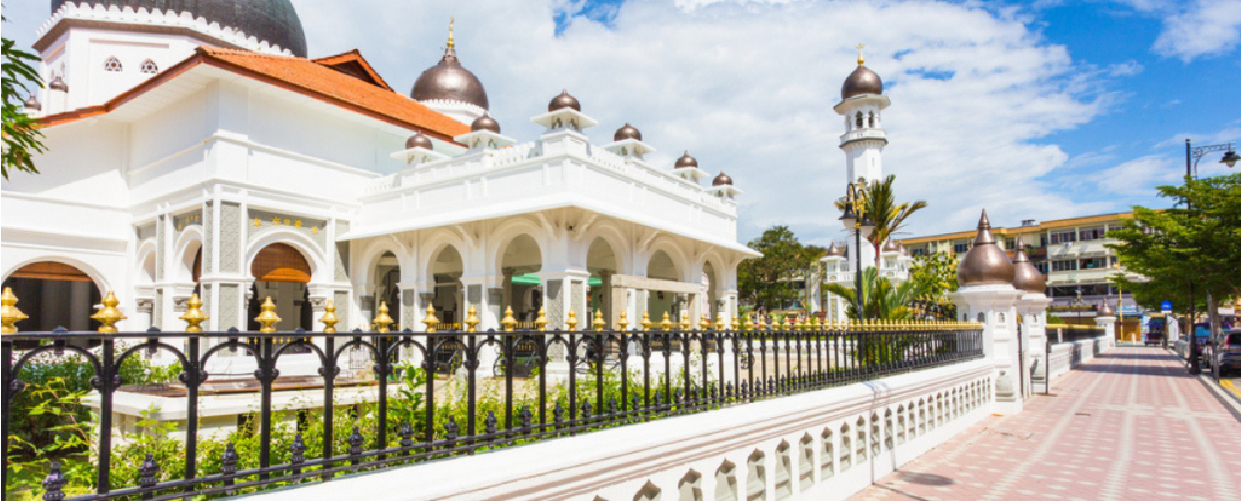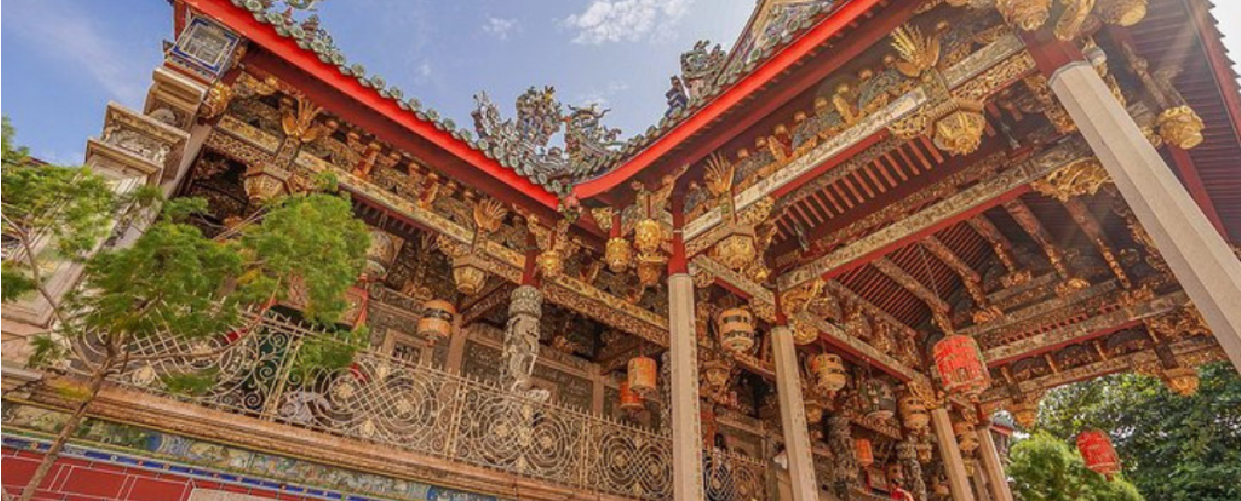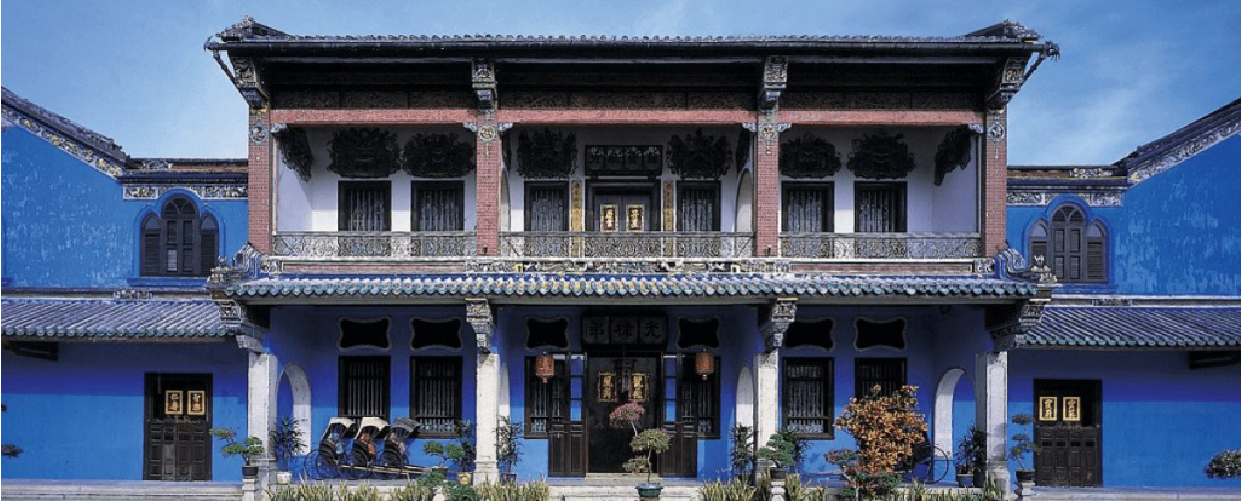
Walking on the road of Jalan Masjid Kapitan Keling (or Coconut Foot Street), you will see the Kapitan Keling Mosque. The Malay name of this street is derived from this mosque; go further and pass a cross road After the traffic lights at the entrance, the Guanyin Pavilion, which is full of incense, stands in front of you; continue to walk, hey, isn’t this a Catholic church? Turn around, and there's even a Hindu temple! It is said that when former Indian President Dr.APJ Abdul Kalam visited this place many years ago, he was moved when he found that there were places of worship for four major religions on this street and called it a road of harmony, which embodies A scene of harmonious coexistence of various religions.
Malaysia is a country where multiple races, religions and cultures blend together. Malays, Chinese and Indians are the three major races. Although Islam is the official religion in Malaysia, people still enjoy the right to practice religion freely. Therefore, there are a certain number of followers of Buddhism, Taoism, Hinduism and Christianity, and each religion has its own place of worship. If you are interested in cultural relics and multi-religion, you may wish to consider taking an in-depth tour on Coconut Foot Street, and carefully observe the harmonious figures of people shuttling in different religious places of worship.
Speaking of Coconut Foot Street, I believe everyone has noticed that its Chinese road names and Malay road names are completely incompatible. The name of the road is determined by the state government, but the Chinese habitually name it after the way of life at that time. Therefore, the origin of the name of Coconut Foot Street is due to the fact that it was full of coconut trees in the early years.
Coconut Foot Street Kapitan Keling Mosque
Photo courtesy of carrybeans.com
Masjid ini dibina oleh saudagar India Muslim pada tahun 1801 dan merupakan masjid tertua di Pulau Pinang. Umat Islam bersolat lima waktu, dan apabila melalui masjid ini, mereka sering mendengar siaran berzikir. Oleh kerana reka bentuk asalnya terharu, ia telah diubah suai pada tahun 1930, tetapi untuk mengekalkan tradisi, masjid itu tidak dibina semula, tetapi diperluaskan. Kerja-kerja pada masa itu termasuk menaikkan siling dewan ibadat pusat, menambah baik sistem pengudaraan dan membenarkan lebih banyak cahaya matahari semula jadi menapis ke dalam masjid. Dinding luarnya dicat kuning air, dan dalamannya mempunyai lantai marmar putih. Seni bina masjid dihiasi dengan figura geometri, kerana bentuk figura manusia dan haiwan tidak dibenarkan untuk dijadikan hiasan atau rekaan dalam ajaran Islam. Masjid ini terbuka kepada orang ramai dan lawatan berpandu disediakan, dan pengunjung mesti memakai jubah yang disediakan oleh masjid.
Address: 14, Jalan Buckingham, George Town, 10200 George Town, Pulau Pinang.
Opening Hours: 11:30am to 10:00pm
Entrance ticket: free
Guanyin Pavilion of Guangfu Palace
Photo courtesy of Jin Ling
Guangfu Gong Guanyin Pavilion was built in the fifth year of Jiaqing in the Qing Dynasty (1800 AD). It is the second oldest Chinese temple in Malaysia with a history of 219 years. The architectural layout of the temple is in the Southern Hokkien style with some Cantonese structural elements and ridge decorations incorporated. When Fujian and Guangdong merchants came to Penang to make a living in the early days, Guangfu Palace was the temple where they worshiped Guanyin Bodhisattva together. On the right side of the gate, there is a square monument that reads "At the foot of Penang Island, there is Guangfu Palace, where people from Fujian and Guangdong are peddling and worshiping Guanyin Buddha. Therefore, the palace is named Guangfu".
The Guanyin Pavilion also enshrines gods such as Mazu, Guandi, Da Bogong, Tai Sui, and Zhusheng Niangniang. The incense is at its peak throughout the year, especially on the birthday of Guanyin Bodhisattva. Although the strong smell of incense candles made people unable to open their eyes, believers still hold the fragrance and chant words to Buddhas and Bodhisattvas.
Address: 30, Jalan Masjid Kapitan Keling, George Town, 10200 George Town, Pulau Pinang.
Opening hours: 7:00 am to 6:00 pm
St George Church
Photo taken from Hotel.com
The church was built in 1818 by Captain Robert Smith, an engineer from Madras. It has a history of 200 years and can be said to be the oldest British building in Malaysia. The all-white and no-frills design style makes it look clean and neat. There is a green lawn outside the church. The bright sunshine gently falls on the church. With the occasional wind blowing the shadows of the trees, the church adds a sense of tranquility and peace. It was bombed by the Japanese army during World War II. The roof collapsed after being hit by a missile, and the hall was also destroyed by artillery fire. Many valuable cultural relic chairs were not spared. Fortunately, with the help of the church members, it was gradually restored to its original appearance.
Address: 1, Lebuh Farquhar, George Town, 10200 George Town, Pulau Pinang.
Opening hours: Monday to Thursday, 9:00 am to 3:00 pm (guided tours available)
Sri Mahamariamman Temple
Photo courtesy of Jin Ling
Things about India always give people a colorful feeling, as can be seen from the exterior design of Indian temples. Also located on Coconut Foot Street, this Hindu temple is also a century-old temple, built in 1801. At that time, the Hindu Temple was only a small temple, and it was not expanded to its current scale until 1833. There is a 7-meter-high temple tower (Gopuram) above the temple, on which are carefully carved gorgeous and colorful gods and goddesses, which look lifelike. It is said that in the 7th century AD, merchants from India introduced Hinduism to Malaysia. The goddess Mariamman enshrined in the temple was one of the most worshiped gods by Indians at that time. Believers believed that the goddess could protect them from various diseases outside India intrusion. Every Thaipusam and Deepavali, the temple will be crowded with devout believers to worship.
Address: Lebuh Queen, George Town, 10450 George Town, Pulau Pinang.
Opening hours: 6:30 am to 12:00 noon; 4:30 pm to 9:00 pm
post a comment
You must be logged in to post a comment.


